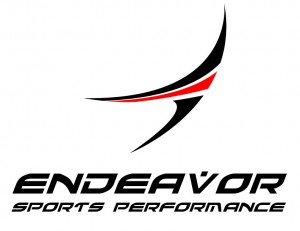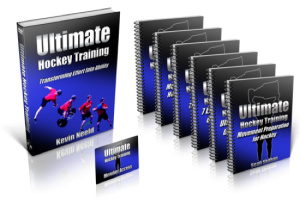Over the last few years, we’ve trained, and (more importantly) developed some RIDICULOUSLY fast skaters at Endeavor Sports Performance. Hockey has always been dominated by fast, or maybe more appropriately, explosive skaters, but this is especially true in today’s game. Not lost on the majority of players, parents, and coaches, by far the most common training goal we here is “my coach told me I need to get faster”, or “I need to improve my first few steps”.

“David. Throw out all the programs we wrote to make our players slower. This one needs to IMPROVE his speed!”
The reality is that almost every player (with the exception being SOME at the pro level) has a window to make speed improvements, and the younger the player (or the less training experience) the larger that window is. Further, every player that is really serious about competing at the next level should train to improve their speed, regardless of whether that is a strong point of theirs at the current level. Recognizing the importance of speed training in the short- and long-term success of hockey players was what provoked me to write Breakaway Hockey Speed (which you can get for free by clicking on that link), and why speed training was such a large component of my new book Ultimate Hockey Training.

Off-Ice Explosiveness (This is an advanced exercise and not appropriate…at all…for beginners)
On-Ice Explosiveness (This is an advanced 1-on-1 move and highly appropriate for everyone)
In other words, training for speed involves more than speed training. It takes a comprehensive training approach to really maximize a player’s speed potential. Conveniently, training these other physical qualities (speed, power, strength, core stability, conditioning, etc.) also improves every other aspect of on-ice performance. It’s a win-win, and why it drives me crazy to see so many players entering “speed and conditioning programs” that completely neglect the very direct transfer that strength training has to on-ice speed improvements.
That said, all of these things improve first step quickness CAPACITY, which coincides with, but is not exactly the same as first step quickness EXPRESSION. Simply, capacity is what a player COULD do; expression is what a player does. For any given level of capacity, there is a range of expression. Ultimately, a player would want to maximize their capacity AND their expression. This difference helps explain why some players may train hard, but not see much in the way of on-ice gains (they could also be training with a terrible program), and why some players may be quick in practices, but not in games. At a minimum, understanding other areas to improve first step quickness EXPRESSION expands the areas players have to grow, which ultimately expands their potential.
With that in mind, the Top 5 things players can do to improve the expression of first step quickness on the ice are:
1) Know where your teammates AND opponents are at all times.
First step quickness, technically, isn’t always starting from a stand still. Often times players are gliding in one direction and need to accelerate quickly to create space between them and an opponent. Players at all levels get into trouble when they hold on to the puck too long, which is often used as a strategy to buy time to find an open teammate. If you scan the ice constantly to get an idea of where the other players are, and where they’re gravitating to, you’ll be able to find open ice AND open teammates much faster. In other words, you’ll learn where players on both teams are, and just as importantly, where they aren’t. The ability to find and/or create time and space is incredibly valuable as players advance to higher levels. It will slow the game down and allow you to make better decisions with and without the puck.
2) Accelerate when receiving the puck in open ice
It’s not always appropriate to skate at full speed when you get the puck, but many players receive a pass and their feet stop completely for a couple seconds. Remember, there are players on the other team that want the puck you have, and they’re likely closing in on you from multiple directions. Closely related to the first point, if you’ve scanned the ice before you receive the puck, you have an idea of where some open ice may be. Receive the puck in stride and immediately take a couple strides to help create separation between you and the opponent. This will help you create time and space, and because you also know where other opponents and teammates are, ultimately allow you to make a better decision with the puck.
3) Consciously focus on accelerating quickly
Many players can make a pretty significant jump in their ability to express their first step quickness capacity by consciously focusing on accelerating quickly through their first few steps. As players spend more time on the ice, the expression of many skills becomes automatic. This is, in fact, a desirable adaptation. However, in the case of first step quickness, many players aren’t quick in certain situations because they’ve made a poor habit automatic. By spending some time in practices and games consciously focusing on being explosive with starts and speed changes (this applies to #2 above), players can re-groove a more optimal habit. This can often be achieved over the course of a few weeks, at which point players can merge this behavior back to a more subconscious level, allowing them to be more responsive to other external stimuli.
4) Learn to under handle the puck
We recently got a question on the Hockey Strength and Conditioning forums about how to become faster WITH the puck. The truth is that handling a puck will absolutely slow a player down because it disrupts the synchrony of upper and lower body movement necessary to maximize speed. That said, if a player is fast without the puck, they shouldn’t be slow with the puck. The puck doesn’t need to be glued to your stick. Learn to under handle it. Push it in open ice. Place it in areas of the ice where you know you can beat your opponent to it. If you’re taking a defenseman wide, you can put it under their stick, then lift their stick with yours, and cut them off with your body. There are dozens of examples of how to under handle the puck, but it’s an important skill to have. For every toe drag, where a player makes a move with relatively consistent contact with the puck, there are dozens and dozens examples of moves or situations where players break contact to put the puck in a safe area to make a play. It happens fast, but Gaudreau does this a few different times in the video above.
5) Study the habits of your opponents
This is a huge idea that many players do subconsciously, but most don’t do at all. Do players on the other team tend to hold their stick to the side of their body or in front? Does the fast forward on the other team stop when he forechecks or circle around? Does the goalie have a tendency to cheat toward playing the puck behind the net with dump-ins? Does the defenseman on the other team crossover a lot while skating backwards? Picking up on these tendencies can help you exploit what may be a suboptimal habit of an opponent to create more time and space with the puck. Using the last point as an example, if a defenseman has a tendency to crossover a lot while skating backwards, it’s likely that a shoulder/head fake toward the inside will cause them to crossover in this direction, which provides a nice window to push the puck to the outside (under handling it), and beat them wide. Coming back to the original idea of differentiating between speed capacity and expression, in this scenario your speed capacity hasn’t changed at all, but your speed expression, dictated by your ability to create time and space, and in this case beat the defenseman, has change significantly.
Conclusion
The best advice I can give any player is to become a student of the game. Off-ice training can have a huge impact on a player’s career by improving the player’s physical capacity and therefore capacity to perform various skills on the ice. However, there is still additional room for growth by learning to anticipate the movement of all players on the ice, create time and space, and exploit the tendencies of your opponents. Improving these abilities will essentially improve the expression of playing ability, for any level of capacity.
To your success,
Kevin Neeld
P.S. If you want an off-ice system to help improve on-ice speed, check this out: Ultimate Hockey Training
Please enter your first name and email below to sign up for my FREE Athletic Development and Hockey Training Newsletter!